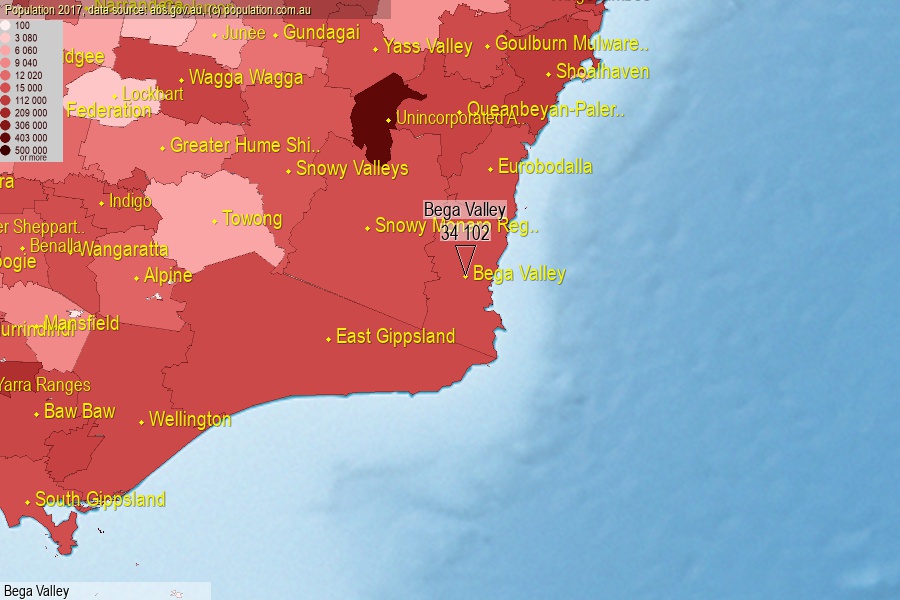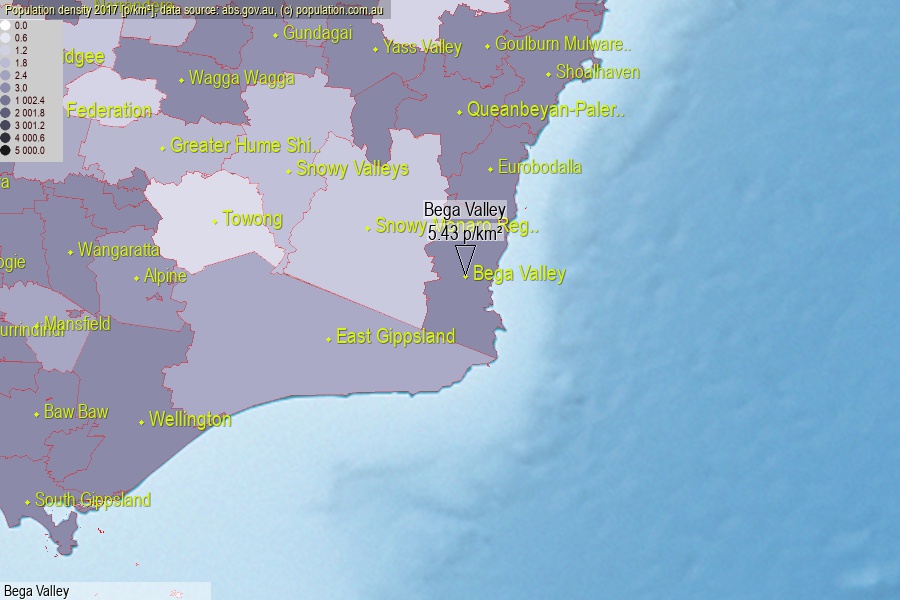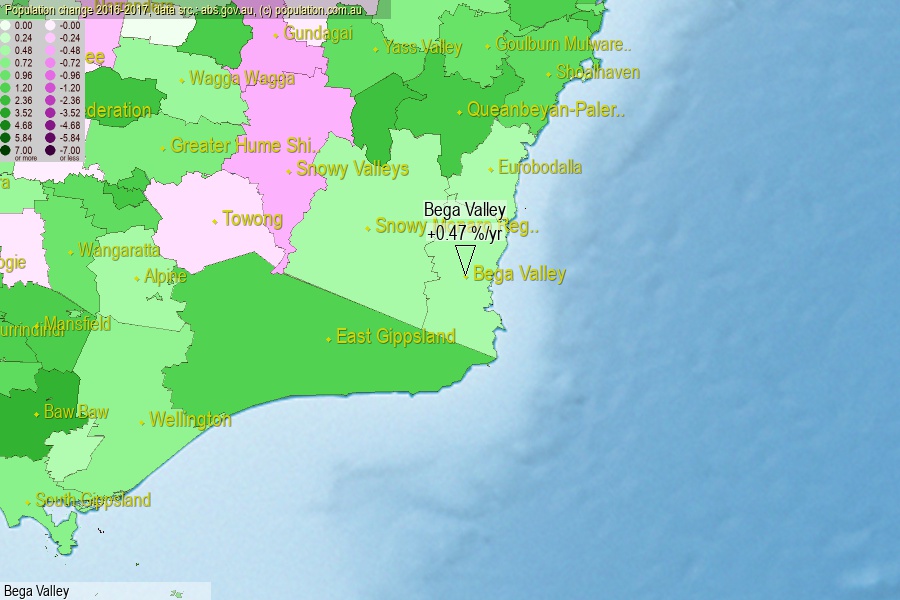 population.com.au
population.com.auLast official estimated population of Bega Valley Area (as Local Government Area) was 34 102 people (on 2017-06-30)[2]. This was 0.14% of total Australian population and 0.429% of NSW population. Area of Bega Valley is 6 278.90 km², in this year population density was 5.43 p/km² . If population growth rate would be same as in period 2016-2017 (+0.47%/yr), Bega Valley population in 2025 would be 35 418. [0]



Click to enlarge. Bega Valley is located in the center of the images.
Population [people], population density [p./km²] and population change [%/year] [2]
[1996-2001] +1.48 %/Y
[2001-2002] +1.20 %/Y
[2002-2003] +0.86 %/Y
[2003-2004] +1.13 %/Y
[2004-2005] +0.64 %/Y
[2005-2006] +0.70 %/Y
[2006-2007] +1.11 %/Y
[2007-2008] +0.57 %/Y
[2008-2009] +0.78 %/Y
[2009-2010] +1.05 %/Y
[2010-2011] +0.50 %/Y
[2011-2012] +0.48 %/Y
[2012-2013] +0.43 %/Y
[2013-2014] +0.39 %/Y
[2014-2015] +0.45 %/Y
[2015-2016] +0.68 %/Y
[2016-2017] +0.47 %/Y
[0] Calculated with linear interpolation from officially estimated population
[1] Read more about LGA and Australian Statistical Geography Standard (ASGS) on abs.gov.au
[2] Population data from Australian Bureau of Statistics (Population and density: 2017; change: 2016-2017)
[3] Digital Boundaries: Australian Statistical Geography Standard (ASGS) 2016.